Public transport in Africa is as diverse as the people that ride on it. This article will cover the varying ways people move around in Africa.
Public transportation might not really be what you think it is in Africa. Given that most governments don’t allocate major budgets to public transportation in Africa, there are a few bus, train, or taxi companies available. Public transportation tends to be largely informalized in Africa. This can make getting around a challenge, especially for newbies. Read along to find out more about what these are.
Public transport in Africa is quite different than it is in the Western world. According to the United Nations Statistics Division, approximately 43 percent of Africans live in urban areas where informal and informalized modes of transportation are prominent. In most cases, this means having to walk a good distance from where you live to where you’re going — but that’s not always the case.
With Africa’s population set to double by 2050, the continent has a transport problem. How will people get around when cities grow and resources become more scarce?
Public transportation in Africa is unique and interesting when you think about it. Unlike other places in the world where you have an established, reliable, and sometimes iconic public transportation system (like those in Japan or New York), African public transportation is different.
Public transportation in Africa is difficult to compare to many other areas of the world. On the surface, African cities seem more like mega-cities than metropolitan areas. Outside it is hard to find any affordable (or available) means of public transportation, except for taxis and small buses used by local staples. In Africa, however, inexpensive public transport has become an essential part of life for both Africans and expatriates alike. Something that would have been unthinkable ten years ago has now become a part of everyday life for Africans.
Here’s How People Get Around
Public transportation in Africa is quite unique. In most countries, it’s typically informal or informalized, meaning that there isn’t an extensive public transport system available — but that doesn’t mean you can’t still get around. This means that vehicles don’t have fixed routes or schedules (though some do), and they don’t have designated stops or stations. Instead, they simply take passengers wherever they need to go, stopping when someone flags them down or when they’re full of people. The price is negotiated with the driver before getting on board; it’s usually less than formal taxis.
INFORMAL TRANSPORT IS PERVSAIVE.
Informal transport appears in many forms like bikes, minibuses, motorcycles, cabs, jitneys etc

Dala-Dala buses Dar-es-Salam Tanzania (Photo from CNN)
For example, in Ghana, they have a system called ‘tro-tros’ — essentially privately-owned vans (usually very decrepit) that ply specific routes through towns and cities overnight (hence the word ‘tro-tro’). In East Africa, there is matatu (‘matatus’ too!). These are privately-owned minivans that are usually pretty rickety and have huge signs painted on the side advertising their route.
Take Burkina Faso as an example. Despite having a system of bus and taxi services, the informal sector remains dominant there — 60% of journeys in 2014, according to national statistics. Take a look at Nairobi, Kenya: over 60% of trips are made using informal transport. Or what about Algiers? Roughly 46% of trips are made on informal systems. In almost every city in Africa, some form of informal transport will be available — whether that’s just walking from your office to the nearest store or haggling with taxis outside the airport.
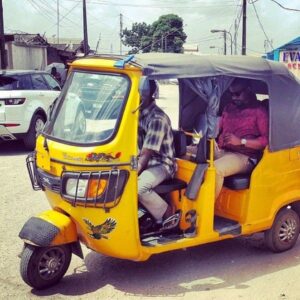
Three wheeled vehicle (called Keke) used as informal transport (Photo from Naijauto)
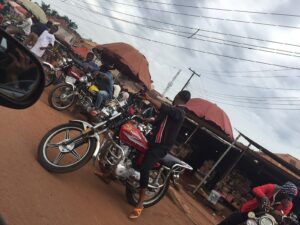
Okada riders (motorcycle) as informal transport in Enugu, eastern Nigeria (Wikimedia)
Informal transport has many benefits over its formal counterparts, but it’s also far more prone to safety risks and cultural hurdles, especially if you’re not familiar with the local languages and customs. That said, there are still plenty of reasons why you should consider taking informal public transport in various African cities — just be prepared.
Formal public transportation systems exist in many African countries as well — these are typically trams, trains, and buses that run along fixed routes from one stop to another on a schedule. You can usually buy tickets ahead of time at a ticket booth or kiosk (or sometimes onboard).
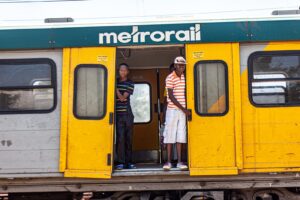
Metrorail is a commuter urban rail in the Gauteng province of South Africa (Photo from Wilimedia)
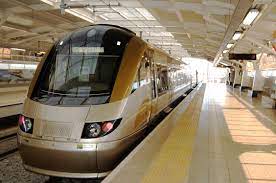
Gautrain High Speed commuter train in the Gauteng Province of South Africa (Photo from Wikipedia)
Public transport options in Africa vary by country and city
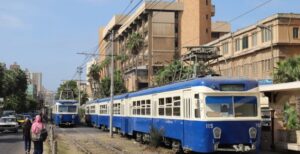
Raml Tramway is the oldest tram in Africa (From Urban Transport Magazine).
One thing to note is both informal public transportation and other public transportation can be referred to as ‘taxis’, be it an informal taxi cab, a tuk tuk, or a matatu.
There are alternative modes of transportation in much of Africa, such as, walking, cycling, hitchhiking, using boats/canoes.
Read more for deeper understanding of Africa’s public transport. Also, check out the trends in Africa’s ever-changing public transit system.
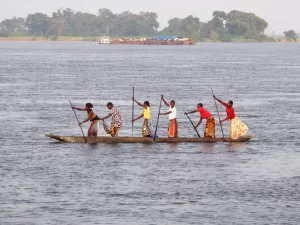
Expert dugout canoeists — villagers on the Congo River use the dugout as their main means of transport on the water. (By Jonathan Blakley/NPR)
Public Transport Challenges
The public transportation system in Africa is one that is greatly under-utilized. The continent has a population just shy of 1 billion people, and only 20% of that population has access to public transportation overall. There are some regions of Africa where its people rely heavily on public transportation than in others. Regardless, the majority of the people living in Africa using road transport as their primary mode of transport encounter numerous challenges.
African public transportation – both formal and informal – isn’t very reliable and is mostly associated with sketchy drivers. In fact, many travelers end up relying on informal means of public transportation because they’re more easily available than formal public transportation. Informal and easy to find, but be careful. It is often overcrowded and sometimes poorly designed. Aside from these, vehicular accidents are major problems. Despite the numerous challenges, there are affordable quick fixes that can be made. For example, better signage around roadways will help reduce accidents. Also, adding speed bumps to high-traffic areas where there have been a lot of accidents will slow down drivers and reduce the chance of a serious accident.
Africa is a continent filled with millions of people. Cities such as Johannesburg and Lagos are the largest in the world, with great disparity between the rich and poor. Public transportation is not only key to alleviating some financial strain but also connecting many parts of these cities. As Africa continues to grow in population, more efficient ways to get around its cities must be established.
Read Also: Here is why Africa’s transport system is underdeveloped
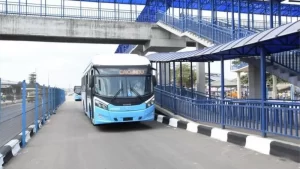
Bus Rapid Transit (BRT) lane and infrastructure in Lagos-Nigeria (Photo from BBC)
Rethinking Mobility IN Africa
Everyday, public transportation systems transport tens of thousands of people across Africa. Despite that, finding reliable transportation in Africa can be difficult for residents and tourists alike, especially because the majority of the continent does not use formal taxis or buses. The growing popularity of informal public transportation, however, is providing solutions to Africa’s transport woes. While this type of transportation may not be practical for everyone, it nonetheless makes it possible for people to get from point A to point B on African soil without spending a fortune or driving themselves.
This article shows that the public transportation system in Africa is not well-structured. It’s time for the industry to upgrade (It would be interesting to brainstorm new modes of transport for the continent). There is a real need for public transport improvement in Africa. The government and institutions need to come together and draft a clear plan and rules on how transport will be expanded across the continent while at the same time protecting those living along the informal routes.
I hope you find this article useful! I wanted to point out that using a multi-modal transportation strategy can be beneficial in Africa. It isn’t always about one mode, but about the combination of modes—find what works for you! If you have questions, feel free to leave a comment or contact me directly. 🙂
****Featured image source: Design Ai
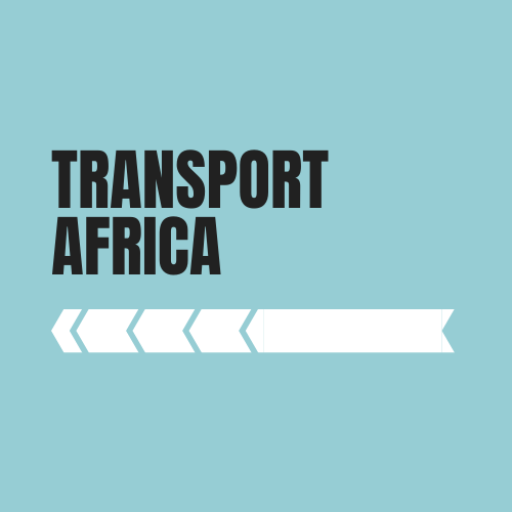
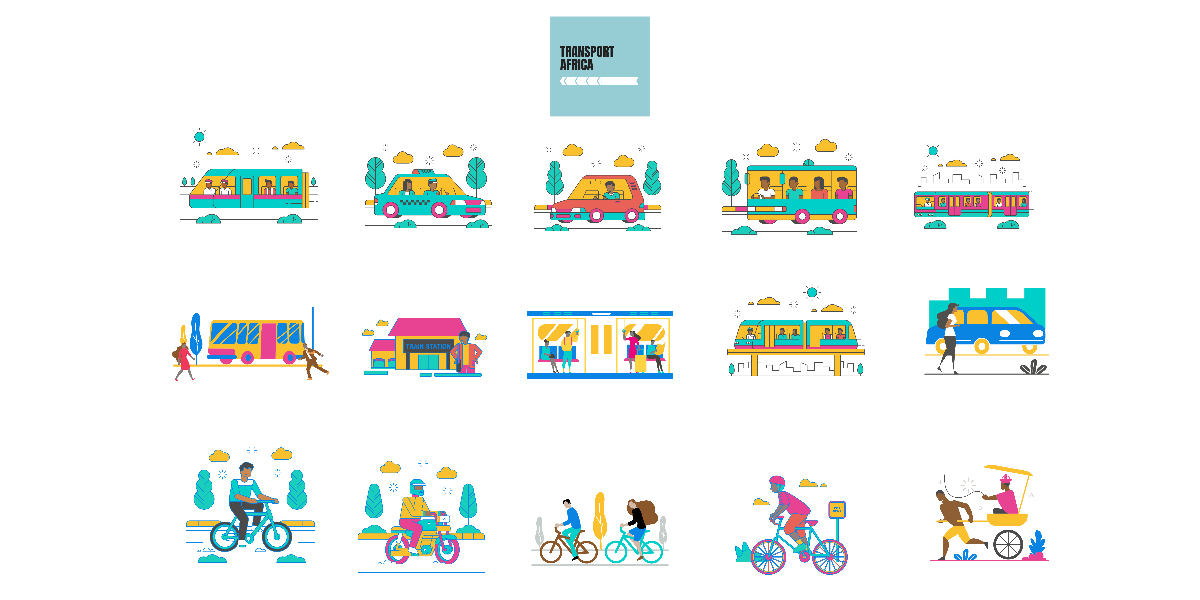
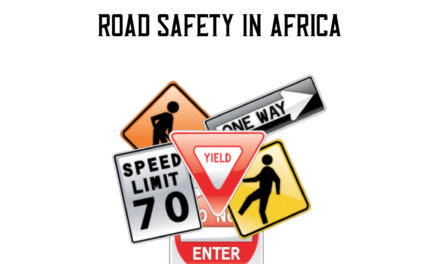
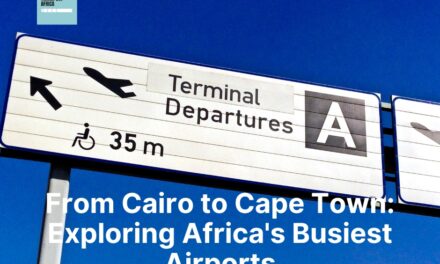

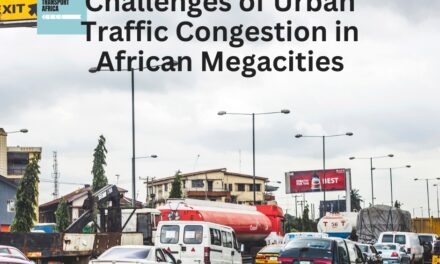
I got good info from your blog